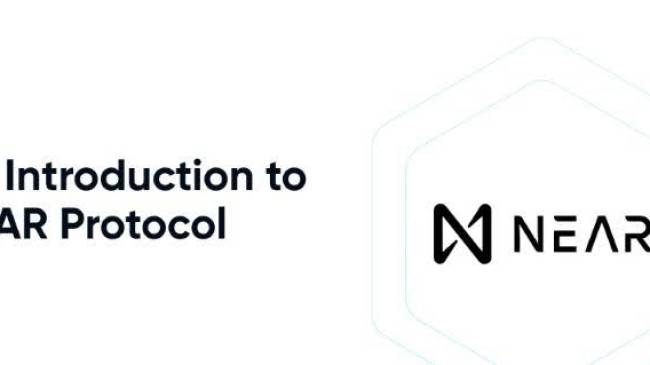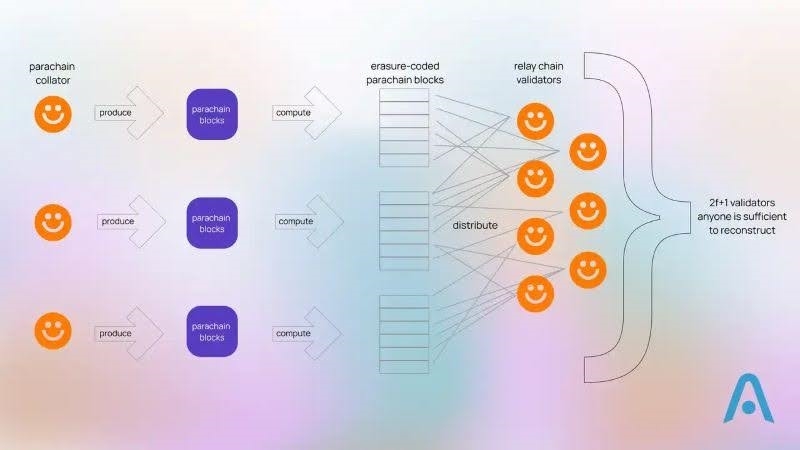Categories: Blockchain
Scaling the Future of Web3: NEAR Protocol Sharding and Innovations in Scalability
NEAR Protocol sharding enhances scalability by partitioning the blockchain into smaller, manageable segments called shards. This approach allows for parallel transaction processing, improving throughput and efficiency while maintaining decentralization and security.
In the realm of Web3 development, achieving scalability, security, and decentralization—known as the blockchain trilemma—has historically posed a significant challenge. NEAR Protocol Sharding, however, is boldly redefining these constraints. Positioned as a developer-friendly layer-1 blockchain, NEAR distinguishes itself with a focus on usability and unparalleled scalability. Its pioneering sharding architecture, coupled with an innovative account model and a steadfast commitment to enhancing user experience, sets a new benchmark for decentralized applications (dApps).
Table of Contents
Beyond technological advancement, NEAR embodies a vision of fostering a vibrant, user-centric ecosystem. The U2U Network, a decentralized social platform built on NEAR, serves as a prime example of the transformative potential of this groundbreaking blockchain. By emphasizing user autonomy and data sovereignty, U2U demonstrates how NEAR's technology empowers individuals in the digital era.
Understanding NEAR Protocol Sharding
What is sharding?
NEAR Protocol's innovative approach to sharding, known as Nightshade, revolutionizes blockchain scalability and efficiency. Sharding, akin to dividing a bustling city into distinct districts with their own road networks, splits the blockchain into smaller, independent segments called "shards." Each shard processes its set of transactions in parallel, alleviating congestion and boosting network capacity.
How NEAR Implements Sharding
Nightshade introduces specialized nodes called Chunk-Only Producers, tasked with creating and proposing transaction collections within each shard. Unlike traditional sharding methods, NEAR's dynamic resharding capability adjusts shard numbers dynamically based on network demand, optimizing performance and resource allocation.

Benefits of NEAR's Sharding
NEAR's sharding architecture offers significant benefits that enhance blockchain performance and sustainability:
- Scalability: By dividing the workload, NEAR can process a higher volume of transactions per second (TPS) compared to non-sharded blockchains. This boosts transaction speeds and supports the scalability needed for growing user bases and diverse applications.
- Speed: NEAR achieves near-instant transaction finality, ensuring transactions are confirmed and settled almost immediately. This feature is critical for real-time applications, enhancing user experience by reducing waiting times.
- Cost-efficiency: Sharding reduces the computational resources required for transaction validation within each shard. As a result, transaction fees are lowered, making transactions more affordable for users and encouraging broader adoption.
- Sustainability: NEAR employs a proof-of-stake consensus mechanism, which is more energy-efficient compared to the energy-intensive proof-of-work systems used by many other blockchains. When combined with sharding, NEAR significantly reduces overall energy consumption, contributing to environmental sustainability in blockchain operations.
The U2U Network: A Showcase for NEAR's Power
The U2U Network, a pioneering decentralized social platform, operates on the NEAR Protocol, offering users unprecedented control over their digital identities and content ownership. Unlike traditional social media giants, U2U fosters a community-driven environment without profit-driven motives or intrusive advertising algorithms. Users are incentivized for their contributions, shaping a rewarding ecosystem.

While U2U does not directly implement NEAR's sharding technology, it benefits immensely from NEAR's advanced capabilities:
- Smooth User Experience: NEAR's high transaction throughput and near-instant finality ensure a seamless user experience on U2U. Interactions are fast and responsive, akin to centralized platforms. Low transaction fees enable microtransactions and creator tipping, fostering a vibrant economy within U2U.
- Scalability for Growth: NEAR's sharding capability allows U2U to effortlessly scale as it attracts more users. The platform can accommodate millions of users and interactions without compromising performance or speed, crucial for achieving mainstream adoption.
- Innovation: U2U leverages NEAR's flexible architecture and developer tools to pioneer features like decentralized identity and reputation systems. These innovations have the potential to revolutionize online verification and trust mechanisms. NEAR's robust smart contract capabilities support U2U in implementing these cutting-edge functionalities.
NEAR Protocol Sharding: Implications for the Future
NEAR Protocol's sharding technology represents more than just a technical advancement; it heralds a transformative shift in the Web3 landscape.
Potential Impact on Web3
Mainstream Adoption: NEAR's ability to overcome scalability issues makes it appealing to a wider audience, including everyday users and businesses. Its fast, cost-effective transactions and capability to support large user bases are key factors driving adoption.
New Applications: The scalability of NEAR opens doors to sophisticated decentralized applications (dApps) across diverse sectors such as gaming, finance, and social networking. This could lead to innovations like immersive virtual environments, efficient decentralized financial systems, and privacy-focused social platforms.
Competition: NEAR's innovative approach challenges established platforms like Ethereum, particularly as Ethereum transitions to a sharded architecture. NEAR's emphasis on usability, developer support, and ecosystem growth positions it as a formidable competitor in the Web3 arena.

The Role of the U2U Network
Driving Adoption: As a leading dApp on NEAR, U2U Network showcases the platform's capabilities effectively. Its success in attracting users and fostering a vibrant community contributes significantly to NEAR Protocol's overall adoption.
Community Building: U2U nurtures a dynamic ecosystem of developers, creators, and users passionate about decentralized social networking. This community actively contributes to the evolution of both U2U and NEAR, fostering continuous growth and innovation.
Real-World Use Cases: U2U exemplifies practical applications of NEAR's technology, demonstrating its potential to disrupt traditional social media models by prioritizing user sovereignty and data ownership.
Challenges Facing NEAR Protocol
Intense Competition: NEAR operates in a crowded layer-1 blockchain landscape. Established giants like Ethereum are advancing with Ethereum 2.0's sharding implementation, while other platforms such as Solana, Avalanche, and Polkadot are rapidly gaining traction. Competing effectively in this environment requires NEAR to differentiate itself through innovation and community engagement.
Technical Complexity: Implementing sharding is a technically intricate endeavor. NEAR must continually innovate and solve complex challenges to ensure the security, stability, and scalability of its sharded network. This ongoing refinement is crucial to maintain competitive edge and user trust.
Real-World Adoption: While NEAR has attracted various projects and decentralized applications (dApps), achieving widespread adoption remains a significant hurdle. Building a robust ecosystem that appeals to developers and users alike is essential to demonstrating NEAR's real-world utility and value proposition.
Decentralized Governance: NEAR Protocol is transitioning towards a fully decentralized governance model. Establishing a transparent, fair, and efficient governance framework is critical for long-term community trust and sustained development. Ensuring broad participation and effective decision-making processes will be key challenges in this transition.
In conclusion, NEAR Protocol's adoption of sharding marks a significant advancement in the blockchain industry, addressing the longstanding scalability trilemma and paving the way for broader adoption. By facilitating faster, more cost-effective transactions, NEAR empowers a new generation of decentralized applications poised to reach global audiences.
The U2U Network serves as a prominent illustration of NEAR's capabilities, showcasing how sharding enhances user experience through seamless scalability. It underscores NEAR's commitment to user empowerment, innovation, and the creation of an inclusive, decentralized internet.
While U2U does not directly implement NEAR's sharding technology, it benefits from the platform's enhanced speed and scalability, enabling rapid growth and innovation. Together, NEAR and U2U represent a formidable alliance set to redefine social media and the broader Web3 landscape.
Looking ahead, NEAR Protocol's ongoing development and ecosystem expansion, including pioneering projects like U2U, promise to push the boundaries of blockchain technology. The journey towards a decentralized, user-centric internet is well underway, with NEAR at the forefront of this transformative movement.
.png)